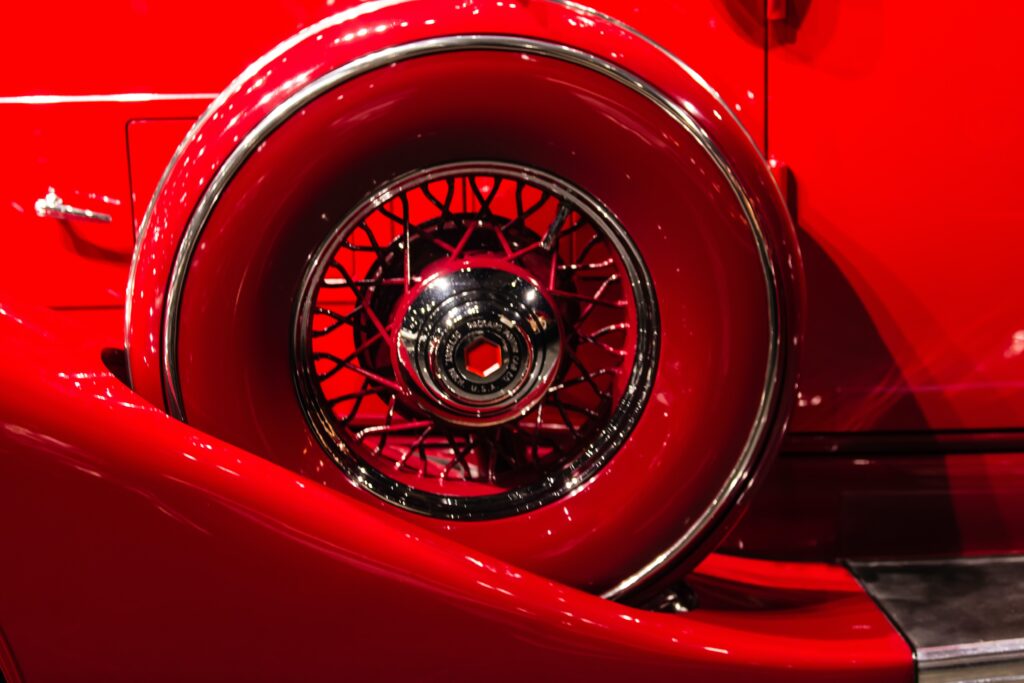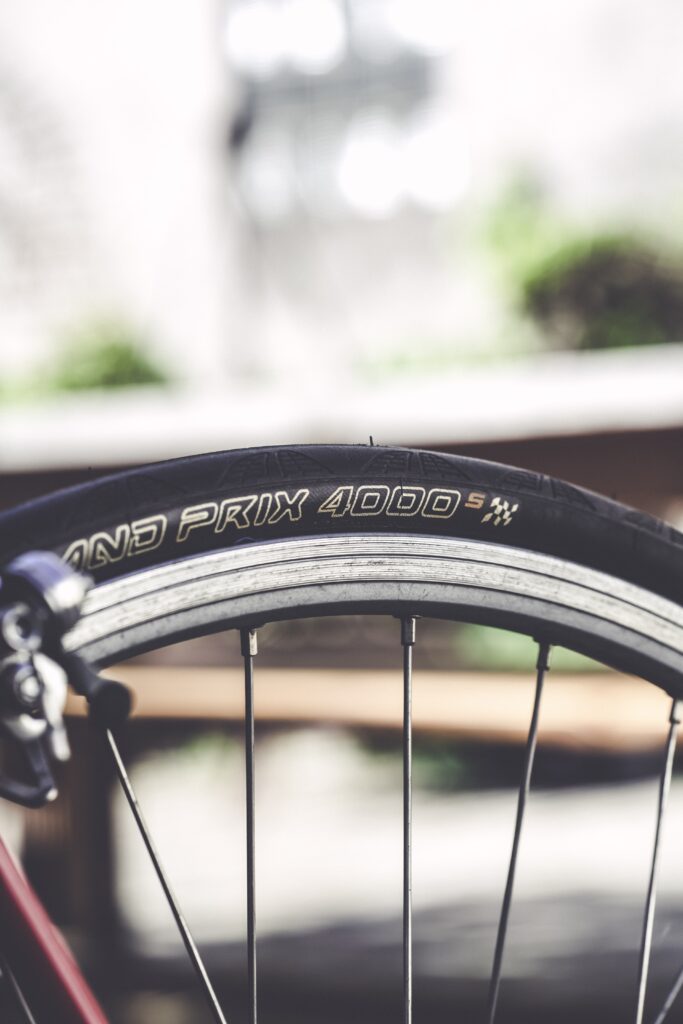Imagine you’re on a road trip, driving down the highway, and suddenly you feel a strange vibration coming from your portable tire compressor. The unsettling feeling intensifies as the vibrations become more vigorous. You start to wonder, “How can I fix this?” Don’t worry, my friend, because in this article, I’ll show you some simple yet effective solutions to fix your vibrating portable tire compressor. Say goodbye to those unsettling vibrations and get back on the road with confidence and peace of mind.

Understanding Excessive Vibration
Defining what constitutes excessive vibration
When it comes to operating a portable tire compressor, it is important to be aware of excessive vibration and its potential impact on the overall performance and durability of the device. Excessive vibration refers to an abnormal amount of shaking or oscillation that goes beyond what is considered normal during the compressor’s operation. This excessive vibration can not only affect the efficiency of the compressor but may also lead to further mechanical issues if left unaddressed.
Potential impact of excessive vibration on the compressor
Excessive vibration can have detrimental effects on the overall performance and longevity of a portable tire compressor. The continuous shaking and oscillation put additional stress on the various components of the compressor, which can lead to premature wear and tear. This, in turn, may result in leaks, decreased airflow, and reduced pressure output. If not addressed promptly, excessive vibration may even cause irreversible damage to the compressor, rendering it useless and necessitating costly repairs or replacement.
Understanding the possible causes of vibration
To effectively address excessive vibration in a portable tire compressor, it is essential to understand the potential causes behind it. Some common causes of excessive vibration include improper compressor mountings, misalignment or imbalance of compressor parts, malfunctioning intake valves, and compressor misalignment. By identifying the root cause of the vibration, you can take the necessary steps to rectify the issue and ensure smooth and efficient operation of your compressor.
Identify the Root Cause
Check the Compressor Mountings
Proper compressor mountings play a crucial role in minimizing vibration and ensuring stable operation. Begin by inspecting the mountings to ensure they are secured tightly and in good condition. Loose or damaged mountings can be a significant cause of excessive vibration. If any issues are found, it is necessary to replace the faulty or weak compressor mountings promptly. By doing so, you can eliminate one potential source of vibration and enhance the overall stability of your portable tire compressor.
Inspect the Alignment and Balance of Compressor Parts
Another factor that can contribute to excessive vibration is the misalignment or imbalance of compressor parts. Carefully examine the alignment of the compressor’s pulley, shaft, and other internal components. Misalignment can occur due to wear and tear over time or as a result of improper assembly. Additionally, an imbalanced rotor can also lead to excessive vibration. To rectify these issues, it is crucial to ensure proper alignment and balance of the compressor’s components. This can be achieved by adjusting and aligning the parts correctly or replacing any damaged or worn-out components.
Check if the Intake Valves are Functioning Properly
The proper functioning of intake valves is vital for the efficient operation of a portable tire compressor. Malfunctioning intake valves can create back pressure and disrupt the airflow, leading to excessive vibration. Carefully inspect the intake valves to ensure they are opening and closing properly. If any issues are detected, such as valves sticking or not seating correctly, it is important to replace them with new ones. By evaluating and replacing faulty intake valves, you can eliminate one potential cause of excessive vibration in your compressor.
Inspect for Compressor Misalignment
Compressor misalignment is another possible cause of excessive vibration. It can occur due to improper installation or as a result of the compressor being impacted or bumped during use. A misaligned compressor will not only vibrate excessively but may also experience reduced efficiency and increased wear on the components. To determine if your compressor is misaligned, look for symptoms such as unusual noise or vibrations during operation. If misalignment is found, it is necessary to correctly align the compressor by adjusting the mounting or other relevant components. Addressing the issue promptly will help restore stable operation and prevent further damage.

Check the Compressor Mountings
Understanding the role of mountings
Mountings are an integral part of a portable tire compressor as they provide stability and support, which is essential for efficient operation. The mountings help absorb vibration and reduce the transfer of excessive movement to surrounding surfaces. They ensure that the compressor remains securely in place during operation, minimizing the risk of damage or accidents. By understanding the significance of mountings, you can appreciate their role in reducing vibration and maintaining the overall performance of your compressor.
Identifying faulty or weak compressor mountings
To determine if your compressor mountings are faulty or weak, conduct a thorough visual inspection. Check for signs of damage, such as cracks, corrosion, or wear. Additionally, ensure that all mounting bolts are securely fastened. If any issues are detected, it is crucial to replace the damaged or weak mountings promptly. Neglecting this aspect can lead to increased vibration, decreased stability, and potential damage to the compressor or surrounding components.
Replacing damaged mounting
If you identify any damaged or weak mountings during your inspection, it is important to replace them as soon as possible. Obtain suitable replacement mountings from the manufacturer or authorized dealer. When installing the new mountings, ensure that they are tightened securely according to the manufacturer’s instructions. By replacing damaged mountings, you can restore stability to your portable tire compressor and reduce the risk of excessive vibration.
Inspect the Alignment and Balance of Compressor Components
Examining the compressor’s internal components
Proper alignment and balance of the compressor’s internal components are crucial for reducing vibration and ensuring smooth operation. Examine the pulley, shaft, and other relevant parts to identify any signs of misalignment or imbalance. Look for visual cues such as irregular wear patterns or visible damage. Additionally, pay attention to any unusual noises or vibrations during operation, as these can also indicate alignment or balance issues.
How to check pulley alignment
To check the alignment of the pulley, visually inspect its position relative to the other components. It should be centered and running true with no wobbling or deviation from the correct alignment. You can also use alignment tools or laser alignment devices for more precise measurements. If misalignment is detected, it may be necessary to adjust the position or realign the pulley. Follow the manufacturer’s instructions or consult a professional if you are unsure about the correct procedure.
The importance of balancing the rotor in a compressor
The rotor is a critical component of a compressor, and its balance directly affects the level of vibration. An imbalanced rotor can cause excessive vibration and strain on the compressor. To ensure proper balancing, consult the manufacturer’s guidelines or refer to a professional technician. They will have the necessary equipment and expertise to assess and correct any rotor imbalance. By addressing rotor imbalance, you can significantly reduce vibration and improve the overall performance of your portable tire compressor.

Evaluate The Intake Valves
Understanding the function of intake valves
Intake valves play a crucial role in controlling the airflow into a compressor. They open to allow air to enter the compression chamber and close to ensure proper compression and delivery of compressed air. Malfunctioning intake valves can disrupt the airflow, resulting in increased back pressure and excessive vibration.
Identifying malfunctioning intake valves
To identify malfunctioning intake valves, carefully observe their operation during the compressor’s cycle. Listen for any abnormal ticking or clicking sounds, which may indicate that the valves are sticking or not seating correctly. Additionally, check for signs of wear, damage, or corrosion on the valve surfaces. If any issues are detected, it is imperative to replace the faulty intake valves promptly. This will ensure optimal airflow, minimize back pressure, and reduce the risk of excessive vibration.
Replacing faulty intake valves
Replacing faulty intake valves requires acquiring the correct replacement parts from the manufacturer or an authorized dealer. Follow the manufacturer’s instructions or seek guidance from a professional technician for the proper installation procedure. By replacing malfunctioning intake valves, you can restore the airflow and eliminate one potential cause of excessive vibration in your portable tire compressor.
Inspect for Compressor Misalignment
Symptoms of a misaligned compressor
A misaligned compressor can exhibit various symptoms that indicate excessive vibration and misalignment. These symptoms include loud or unusual noises during operation, visible shaking or vibrations, and the compressor not running smoothly. If you notice any of these signs, it is crucial to inspect the compressor for misalignment.
How to correctly align your compressor
To correctly align your compressor, begin by checking the mounting and fastening bolts. Ensure that they are properly tightened and secure. If any bolts are loose, tighten them according to the manufacturer’s instructions. Additionally, examine any visible alignment markers on the compressor and make adjustments as necessary. If you are unsure about the alignment process, it is advisable to consult the manufacturer’s guidelines or seek assistance from a professional technician.
Addressing misalignment issues
Addressing misalignment issues promptly is essential to prevent further damage to the compressor and optimize its performance. If your inspection reveals misalignment, follow the prescribed corrective procedures provided by the manufacturer or consult a professional technician. By addressing misalignment, you can eliminate excessive vibration and restore the compressor’s stability and functionality.
Regular Compressor Maintenance
The importance of regular maintenance
Regular maintenance is crucial for the efficient and reliable performance of a portable tire compressor. It helps identify and address potential issues before they escalate, ensuring optimal functionality and reducing the risk of excessive vibration. By adhering to a maintenance schedule, you can proactively maintain your compressor’s condition, extend its lifespan, and minimize unexpected downtime.
Creating a maintenance schedule
To create a maintenance schedule for your portable tire compressor, refer to the manufacturer’s guidelines and recommendations. These guidelines typically include specific intervals for tasks such as filter replacement, lubrication, cleaning, and inspection. Follow the provided schedule or adjust it based on your compressor’s usage and operating conditions. Regularly review and update the maintenance schedule to ensure consistent care and performance of your portable tire compressor.
Key components to check during maintenance
During routine maintenance, pay close attention to key components that can affect the vibration and performance of your portable tire compressor. Inspect and clean the intake valves, check and tighten the mountings, and ensure proper alignment and balance of internal components. Additionally, inspect and replace any worn-out or damaged parts, such as belts, hoses, or gaskets, as needed. By regularly monitoring and maintaining these components, you can minimize the risk of excessive vibration and maintain optimal operation.
Conclusion
Recap of how to fix a vibrating compressor
Excessive vibration in a portable tire compressor can have detrimental effects on its performance and longevity. To fix a vibrating compressor, start by identifying the root cause, which may include checking the mountings, inspecting the alignment and balance of compressor parts, evaluating the intake valves, and inspecting for misalignment. Addressing these issues promptly and accurately is crucial to reducing excessive vibration and ensuring stable operation.
Stressing the importance of addressing excessive vibration
Addressing excessive vibration promptly is crucial to prevent further damage to the compressor and maintain its efficiency. Failure to address excessive vibration can lead to reduced performance, increased wear and tear, and potential mechanical failures. By understanding the potential causes, conducting regular maintenance, and promptly addressing any issues, you can prevent excessive vibration and prolong the lifespan of your portable tire compressor.
Final tips for successful compressor maintenance and operation
To ensure successful maintenance and operation of your portable tire compressor, consider the following tips:
- Regularly inspect and clean the intake valves to ensure proper airflow.
- Check and tighten the mountings to maintain stability.
- Inspect and adjust alignment and balance of compressor parts to minimize vibration.
- Create and follow a maintenance schedule provided by the manufacturer.
- Replace any worn-out or damaged components promptly.
- Seek professional assistance for complex maintenance or repair tasks.
By following these tips, you can maximize the performance and longevity of your portable tire compressor, while minimizing the risk of excessive vibration.
In conclusion, understanding the factors contributing to excessive vibration, identifying the root cause, and implementing appropriate measures are essential for fixing a vibrating portable tire compressor. By addressing the issues discussed in this article and adhering to regular maintenance, you can ensure smooth operation, optimal performance, and extended durability of your compressor.
